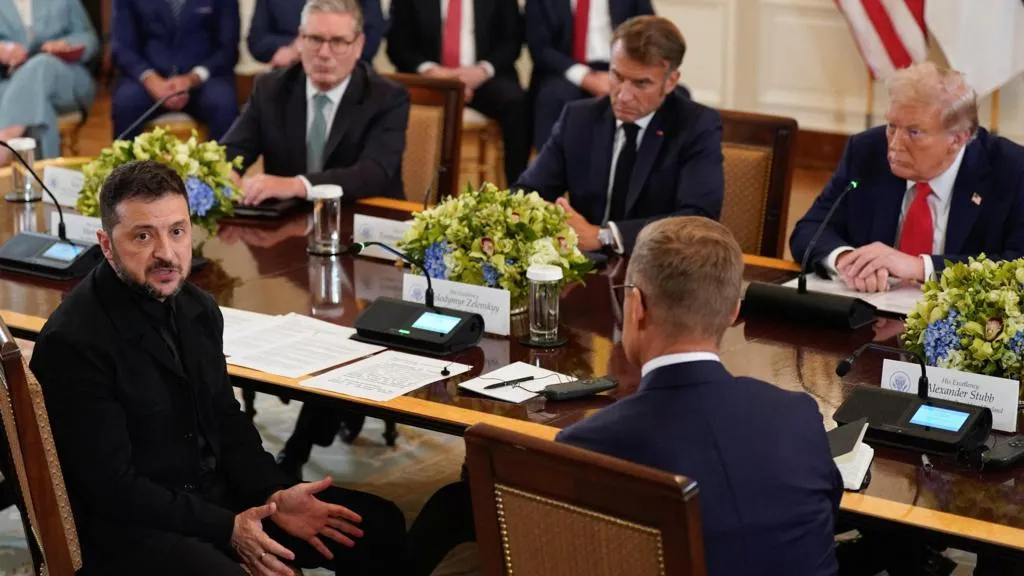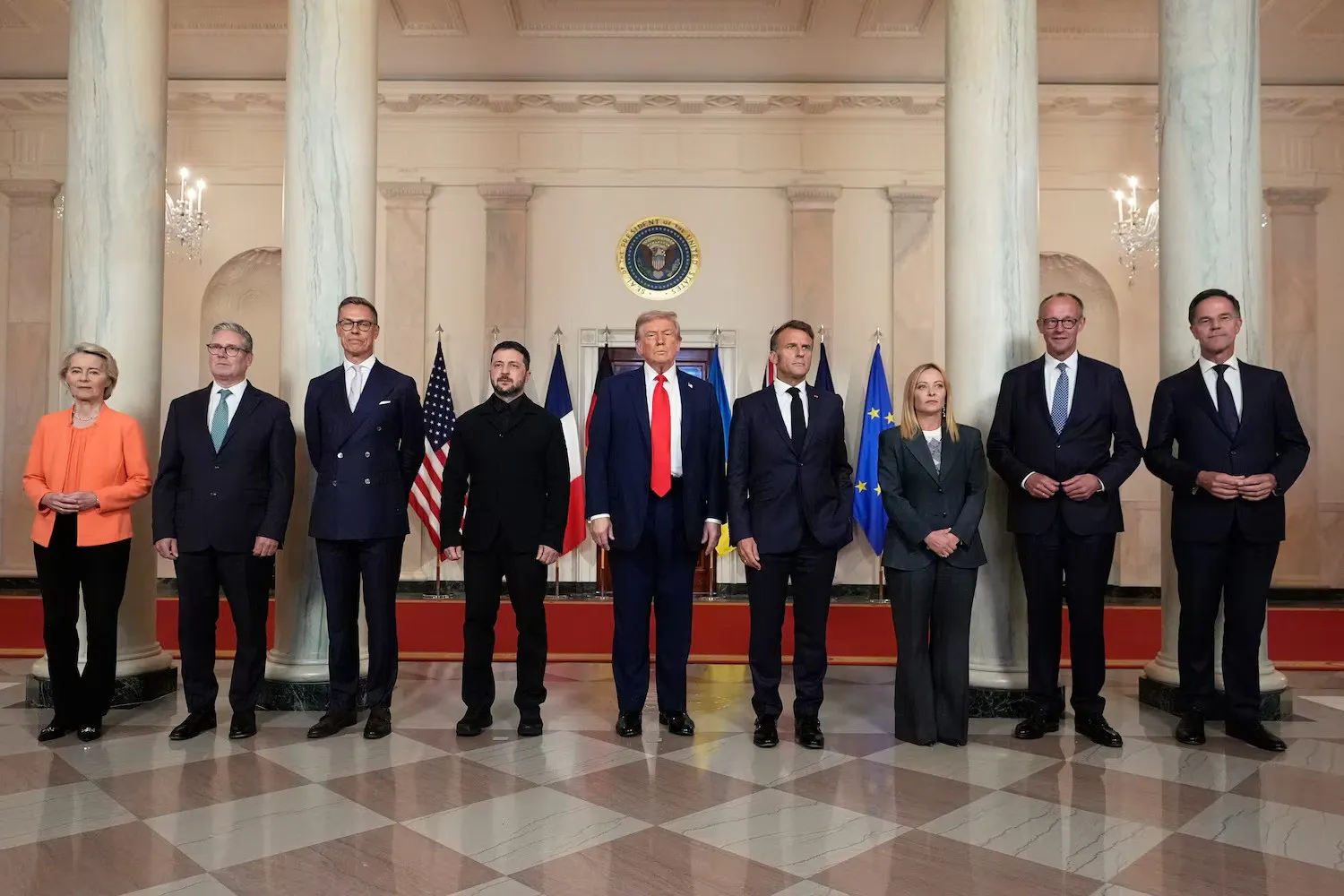Washington — In the White House, where diplomacy often turns into a high-class theater, President Donald Trump and his Ukrainian counterpart Volodymyr Zelensky held talks that could become a turning point in the protracted war in Europe. With smiles on their faces and compliments on their lips, the leaders discussed security guarantees, territorial compromises, and a potential meeting with Vladimir Putin—all against the backdrop of European allies who arrived to support Kyiv's position. But behind the facade of politeness lie deep disagreements, which, according to insiders from the White House, could either accelerate peace or return the conflict to even greater chaos.
We can say: these negotiations resemble the classic Trump style — brilliant promises, avoidance of details, and emphasis on personal relationships. Unlike the failed February meeting, when Trump publicly reproached Zelensky for lack of “cards” in his hand, this time the atmosphere was unexpectedly constructive. Trump, known for his love of flattery, did not hold back: “I can’t believe it — I like it,” he said, commenting on Zelensky’s appearance, who this time chose a strict suit instead of an informal sweater. According to my sources in diplomatic circles, this advice to Zelensky was given by British Prime Minister Rishi Sunak, emphasizing the importance of gratitude and etiquette — a lesson the Ukrainian leader learned brilliantly, uttering “thank you” 16 times during the introductory part.

But behind these superficial gestures lies a real game. Insiders from the State Department reveal that the Ukrainian delegation arrived with a clear task: to investigate the details of Trump’s secret meeting with Putin in Anchorage. There, according to sources close to the negotiations, Putin insisted on full control over four occupied regions — Donetsk, Luhansk, Kherson, and Zaporizhzhia — claiming that Russian forces could seize the rest of Donetsk oblast by October. Americans, looking at maps, tend to believe these threats, but the reality on the battlefield is different: Russian troops have not been able to breach Ukrainian defenses in key areas such as Kramatorsk and Sloviansk for over ten years. These cities are not just points on a map, but strategic fortresses, behind which lies a route to Kharkiv. According to Ukrainian military analysts, Russian losses near Bakhmut — at least 20,000 killed — make any advance suicidal.
Supported by European leaders such as Georgia Meloni from Italy and Alexander Stubba from Finland, Zelensky brought his "cards" to Washington — and they proved convincing. The first: unanimous European solidarity, positioning Ukraine as a shield for the entire continent. “Peace in Ukraine — is peace in Europe,” — emphasized Zelensky, and according to my sources, Trump could not ignore this argument, especially considering his skepticism about NATO. The second card — Kyiv’s military successes, including the “Spiderweb” operation, which destroyed a significant part of Russian strategic aviation, and the recent elimination of a breakthrough near Dobropole. The third, and perhaps most powerful, — the launch of serial production of the "Flamingo" cruise missile, which, according to technical specifications, surpasses Russian "Caliber" missiles and can reach Moscow or St. Petersburg. And finally, the tragic “card” presented by Russia itself: the nighttime attack on Kharkiv, Odesa, and Sumy, where a one-and-a-half-year-old child was killed — an act that shattered Putin's image as a potential peacemaker in Trump’s eyes.
Trump promised security guarantees for Ukraine — from Europe, but “in coordination” with the US. According to my contacts in the Pentagon, this could mean intelligence sharing, logistics support, and even air patrols over the Black Sea, but not the deployment of American troops. “All,” — Zelensky succinctly responded to the question about desired guarantees, emphasizing the need for a strong army and commitments from “great countries.” Insiders say that Trump, who previously relied on economic agreements regarding rare earth metals as a deterrent, is now forced to reconsider his stance under European pressure. Final proposals are expected within 10 days, and they could become an NATO Article 5 analog — an attack on Ukraine as an attack on allies.
The ceasefire, which Trump previously promoted as a quick solution, has now taken a back seat. “We can reach a peace agreement while they are fighting,” — Trump stated, acknowledging Putin’s arguments about the risks of a pause without clear conditions. Zelensky, in turn, is ready for a compromise: “Without any conditions, we must meet.” The most intriguing moment — preparations for a leaders’ summit. Trump telephoned Putin during the summit and announced the start of planning. Zelensky confirmed his readiness for a bilateral or trilateral format, but the Kremlin, through Yuri Ushakov, remained cautious, only talking about “raising the level of representatives.” German Chancellor Friedrich Merz suggested the meeting could happen in two weeks but added: “Whether Putin has the courage to come — we do not know.”
In the sidelines, Trump, forgetting about the microphone, shared with Europeans: “I think he wants to make a deal. No matter how crazy that sounds.” These words, heard by my colleagues, highlight Trump’s optimism — but also the risks. From my experience, such negotiations often end not with peace but with a new wave of tensions. Will this meeting bring us closer to peace, or is it just an illusion? The answer depends on whether leaders find common ground behind closed doors — and whether they are willing to pay the price for a genuine compromise.


